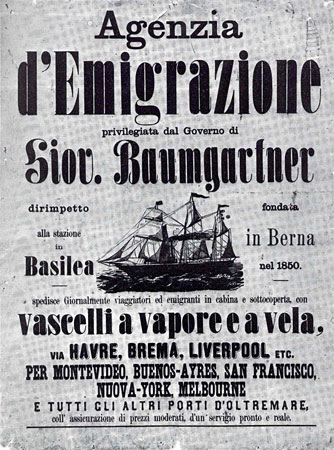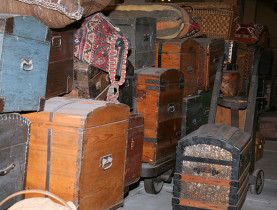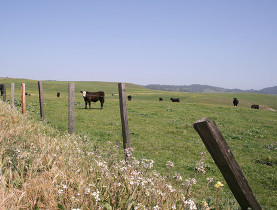The homecoming a father never made

“People point and I hear them say there are Americans up there,” explains Amy Lacy, a California native but a woman with deep roots in this Ticino village where she has a home.
Despite not speaking Italian and the challenges of overcoming other cultural barriers, Amy moved to Gordemo determined to keep the small house in the family, and to get to know who her father was before he migrated to America.
The village is perched on a south-facing mountain slope with a view over Lake Maggiore.
It’s the same commanding vista that Luigi Bisi enjoyed growing up here in the 1910s and 20s. Surprisingly, the family home has changed little too.
Amy and her husband Ron bought the stone structure in 2005. They have made few alterations so it’s easy for Amy to imagine what it was like for her father to have grown up here.
There is no hot water in the cosy kitchen, a rickety wooden bannister lines the stone steps leading upstairs. The roof is tiled with granite slabs.
“He would tell stories about sleeping up in the attic on hay, and now I know what the attic looks like. When you are up there you can see out [between the slabs]. I can see my father up there, looking out, wanting to do something more with his life,” Amy says.
Living off land
Luigi Bisi did. Wishing to learn a trade instead of living off the land like his parents, he emigrated to the United States. He was 18 years old and it was 1930 – the tail end of a large wave of emigration that saw nearly one in five inhabitants of this largely impoverished Italian-speaking part of Switzerland go abroad, settling in California.
Few returned. Bisi – a carpenter working in the shipyards in northern California – was one of those who never came back. He even refused to make the journey in the 1970s when Amy and Ron flew to Switzerland with their children to visit relatives for the first time.
“We were going to pay his way, but he would not come. I think he never came back because he felt guilty about leaving his mother here all by herself with one daughter. Two of the daughters were also in America; the other died young,” Amy says.
“I think my father was heartbroken that he hadn’t come earlier. He really felt that a lot of people were dead or they wouldn’t know him because he was so young when he left.”
Family legacy
Sitting at the same granite table she knew from a photograph taken of her grandmother in the 1940s, Amy says she was the only one of 17 heirs to the estate who was interested in buying the family property to preserve the Bisi legacy.
The past six summers in Gordemo have brought her closer to her father, helping her to understand the Swiss-Italian cultural baggage that he always carried with him.
“Arriving in Zurich for the first time, and travelling to Gordemo by coming through the mountains I realised that all the times we spent camping in California’s Sierra Nevada mountains was really my father trying to come back to his roots. We spent nearly every weekend in summer making a four-hour drive and camping by a river – a river that looks very similar to the river here.”
Luigi Bisi’s father taught him to hunt and fish – and he continued those pastimes in California. Like most families in the upper part of canton Ticino, the Bisis owned several properties throughout the valley where they grazed livestock and stored meat and cheese.
Hunting and fishing
One of the tracts of land was in the hamlet of Ganne, where Amy likes to go for a stroll along the river, imagining her father on hunting or fishing trip with his father. She recalls stories of how the catch and game were sold to restaurants.
“I still have cousins living there and they tell me that my grandfather built all the stone walls that are on the road, because they held in his goats. I feel real close to my dad in the Ganne area, knowing that he spent a lot of his life there.”
Managing without many mod cons in their small Ticino home – and without a car, Amy and her husband have got a small sense of her father’s values of thrift and self-reliance.
“People don’t throw things away, they just put them in the cellar. I have to think about the weather if I’m going to walk down [to buy groceries]: ‘Is it going to rain today?’. It’s very different but we love every rock and stone that’s here.”
In her will, Amy’s grandmother left the Ganne property to her children in California, hoping in vain that one would eventually return to claim it. They never did, and the house was eventually sold.
Thanks to Amy and her husband, the small rustic dwelling in Gordemo remains in the family.
“I especially want that our four grandchildren can come and experience this place, and I hope that one day they’ll want to come here in the summer when I’m no longer around, keep the Bisi legacy alive and just enjoy this beautiful part of the world.”
According to Ticino historian, Giorgio Cheda, approximately 27,000 people from Ticino migrated to California in the latter decades of the 19th century and early years of the 20th.
The Swiss-Italian canton’s population at the time was between 118,000 and 139,000.
1845-1855
A time of political upheaval, famine and the start of the Californian and Australian gold rushes, setting off mass migrations, mostly to North and South America, but also Australia.
1848
Disagreement with Austrian rulers in Lombardy result in border blockage and expulsion of Ticinesi from Lombardy.
1849
Discovery of gold in California.
1850
Second economic blockade of Ticino by Austria.
1851
Gold found in Victoria, Australia. Below average harvest in Ticino due to unusually cold and wet weather. Prices of staple foods rise sharply and famine threatens.
1853
Riots in Milan lead Austrian governor Field Marshal Radetzky to impose strict blockade of border with Ticino and all Ticinesi are expelled.
1855
Swiss federal government imposes tight controls on loans to emigrants, excluding local government authorities from this field. Valle Maggia nearly drained of manpower due to migrations. Migrations to Australia almost cease due to failure of most of the approximately 2,000 Ticinesi settlers to find their fortune there.
1880-1914
Second wave of mass migrations. Main movement to California where 27,000 Ticinesi – nearly one in five of Ticino’s population – seek their fortune. About 10,000 head to Argentina and a further 2,000 settle in Britain, mostly in and around London.

In compliance with the JTI standards
More: SWI swissinfo.ch certified by the Journalism Trust Initiative
















You can find an overview of ongoing debates with our journalists here . Please join us!
If you want to start a conversation about a topic raised in this article or want to report factual errors, email us at english@swissinfo.ch.